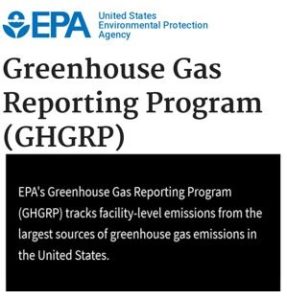July 11, 2019
On October 30, 2009, U.S. EPA issued a final rule “to require reporting of greenhouse gas (GHG) emissions from all sectors of the economy,” but only if a source of such emissions is above certain threshold amounts. Most U.S. industry and business sectors with emissions over the 25,000 metric tons of CO2 equivalent in emissions have been reporting to U.S. EPA ever since.
UEP and the other livestock and poultry sectors filed comments on the proposed rule arguing that as a policy matter, there would be no public value to  requiring individual producers to report these GHG emissions.
requiring individual producers to report these GHG emissions.
Despite these arguments, the final rule’s mandatory reporting requirements were applied to all U.S. livestock and poultry operations. However, no egg producer or any other animal agricultural operation has had to report because Congress since 2010, has included a provision in the final EPA appropriations’ bill telling the agency that no reporting from animal producers can be required.
Until earlier this year, that is, when the House of Representatives struck all environmental “policy riders” from their fiscal year 2020 appropriations bill now moving through Congress, including the GHG reporting provision. Focus is now turning to the Senate, which is expected to include the measure in its version of the EPA funding bill. How this will all play out as the House, Senate, and the Administration work out the appropriations and debt ceiling disagreements remains to be seen.
Nothing is certain about the GHG reporting measure at this point, but the outlook is positive. UEP is in conversations with others in animal agriculture working with Congress on this issue.
Should egg producers be concerned about reporting GHG emissions to the federal government next year if the appropriations bill does not include this measure excluding animal agriculture? The short answer, fortunately, is probably going to be no because laying hen production systems produce minimal GHG emissions.
U.S. EPA estimates that it takes, at one location, more than 723,000 layers using an uncovered anaerobic lagoon or more than 27 million layers with a dry manure system to emit more than 25,000 metric tons of CO2 equivalent in gases which is the reporting threshold.
UEP staff will keep members informed as Congress works through the appropriations process. In the meantime, please contact Tom Hebert (tom.hebert@bayardridge.com) if you have any questions.
For video, photos and other resources, view Resources.
For media inquiries or
interview requests, contact Hinda Mitchell.